Analytical Accounting is a feature of the Odoo 17 Accounting module that enables users to track
financial data more precisely. This is accomplished by adding new dimensions that can be used to
classify and examine financial data, such as departments and projects. Users of analytical accounting
can monitor the financial performance of particular projects or departments and base their business
decisions on this data in order to make better-educated choices. Users can also create thorough
financial reports that can be utilized for forecasting, budgeting, and other types of financial
research. You can see where your money is going and where it is coming from since it gives you a more
in-depth perspective of your spending and income.
To prepare financial reports, plan for upcoming expenses, and monitor spending trends over time,
utilize this module.
Other financial components including Accounts Receivable, Account Payable, and General Ledger can all
be used in conjunction with the analytical accounting capability. To manage client invoices and vendor
bills, it can also be utilized with the Sales and Purchase modules. Businesses can also monitor their
inventory levels and make sure they have enough goods on hand to satisfy their customers' needs by
employing analytical accounting.
Any industry can use this cutting-edge accounting system to manage its financial operations.
Additionally, the feature includes the ability to filter or analyze specific accounts without publishing
a journal article. This means that a new Analytic Account can be formed for a certain product or service
if it is necessary to comprehend the expense specifics of a particular product or service in comparison
to the expense of all products and services. The analytical accounting aspect's well-defined tools and
features will make even the most complicated accounting processes simple.
You must enable the 'Analytic Accounting' feature from the Configuration Settings of the Accounting
module in order to examine and configure the analytic accounts in Odoo 17. where, as demonstrated below,
you may find the menu in the Analytics area.

The Odoo17 Accounting module also has a unique section and cutting-edge features that support
Analytical Accounting activities. The following part will provide a detailed examination of the main
management tools and capabilities present in the Odoo17 Accounting module
Analytic Plans
The Accounting module for Odoo 17 is arguably the greatest and most popular module available. Since its
beginning, this module has consistently been among the most popular modules. It enables better account
and financial management for the user. Analytic Plans, a feature, that helps you manage financial data
in the most practical way possible. You may make and maintain your financial plans with this function.
By doing so, you'll be able to monitor your financial condition and make wiser choices regarding your
money.
You may examine the Analytic Plans menu in the Analytic Accounting portion of the Odoo17 Accounting
module's Configuration tab, as illustrated in the figure below.
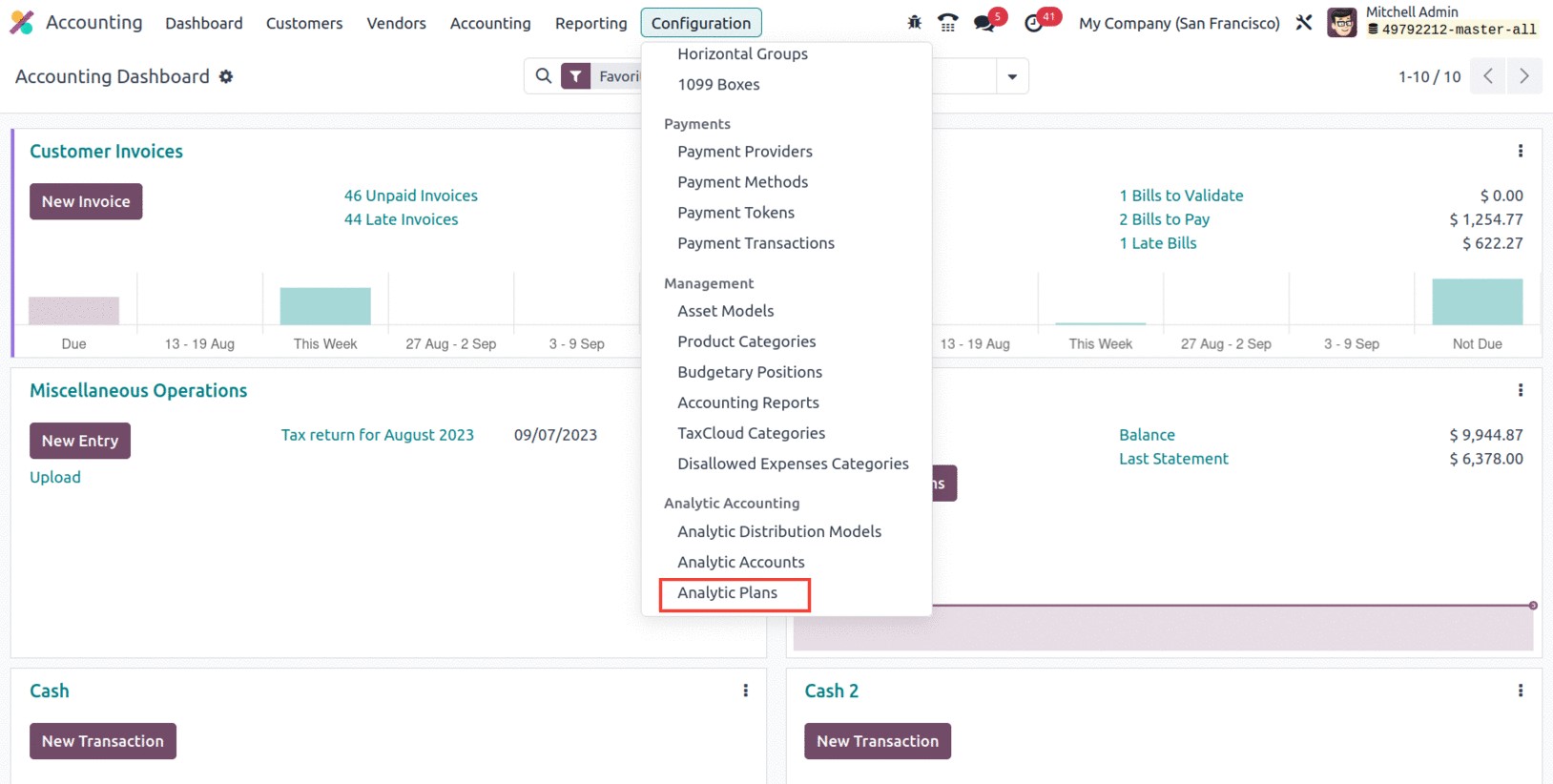
You may find a list of all necessary analytic account plans using the Analytic Accounts menu.

The Analytic Plans panel will methodically save and maintain all configured Analytic Plans, and it will
show the key details for each plan, including Name, Default Applicability, Colour, and Company. You can
choose any of these records to view it in more detail. You can manage a large number of analytical plans
with this capability. You may rapidly select the necessary Analytic Plans
information from the entire list using the many preset and custom Filters and Group By options.

You must select the "NEW" option in order to set up a new financial plan. The NEW button will take you
to the Analytic Plans creation window, as displayed in the screenshot below.
The Name, Parent, and default applicability of the plan can be entered in the Creation window and
marked as Optional, Mandatory, or Unavailable.
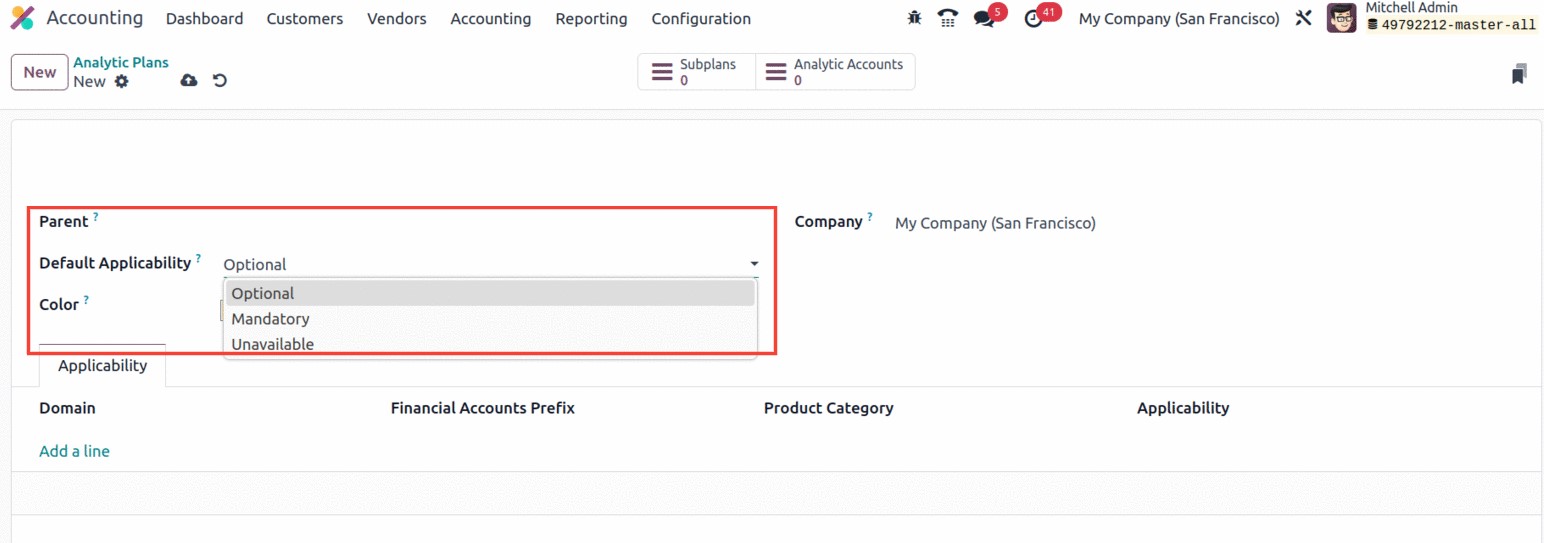
Comparing Odoo17 to earlier versions, some improvements have been made to the analytical plans. Under
the applicability tab, it is possible to define the application of these plans across several domains.
Plans can be used for costs, purchase orders, sale orders, vendor invoices, and other items. In
addition, we will be able to specify whether these plans are Mandatory, Optional, or Unavailable for the
specified analytic plan and whether they apply to a specific
product category or financial accounts with a specific prefix.
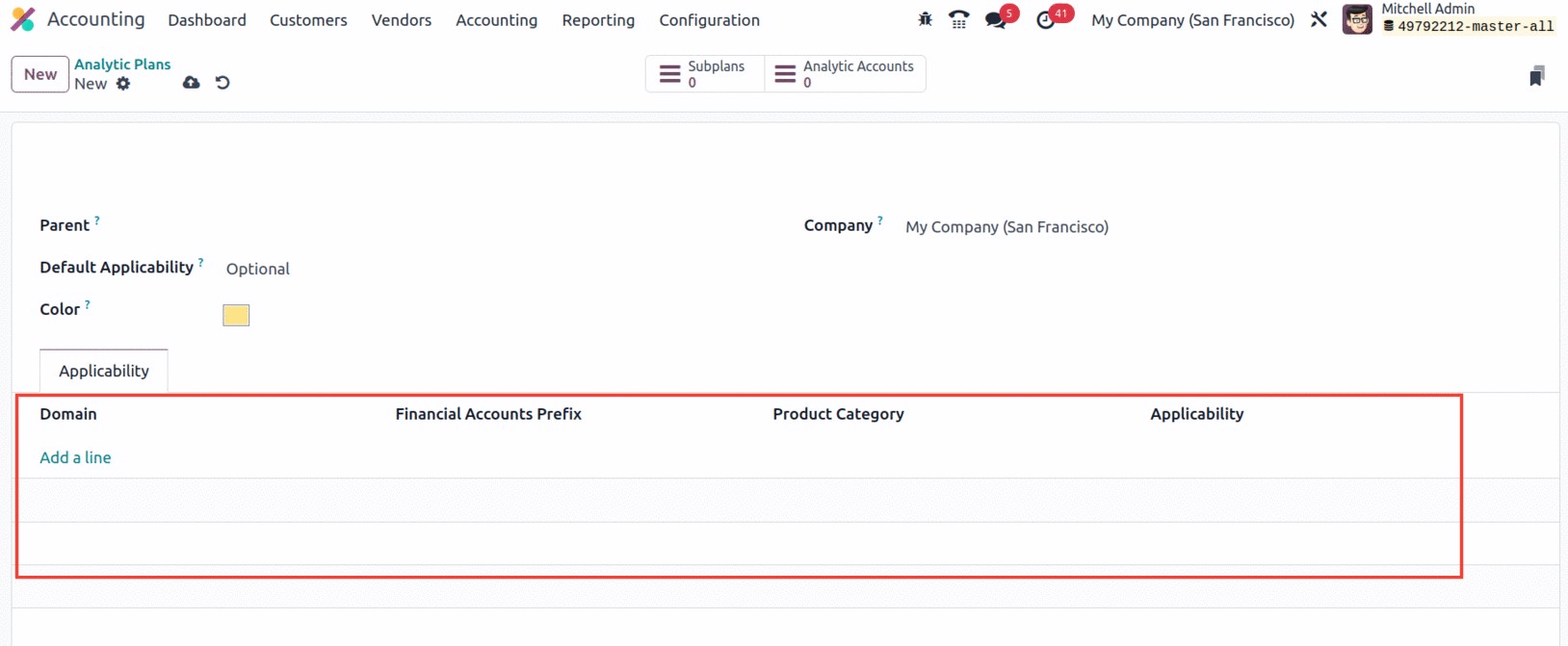
Additionally, sub-plans can be set up for an analytical plan, which we can see in the smart tab
displayed in analytical plans.
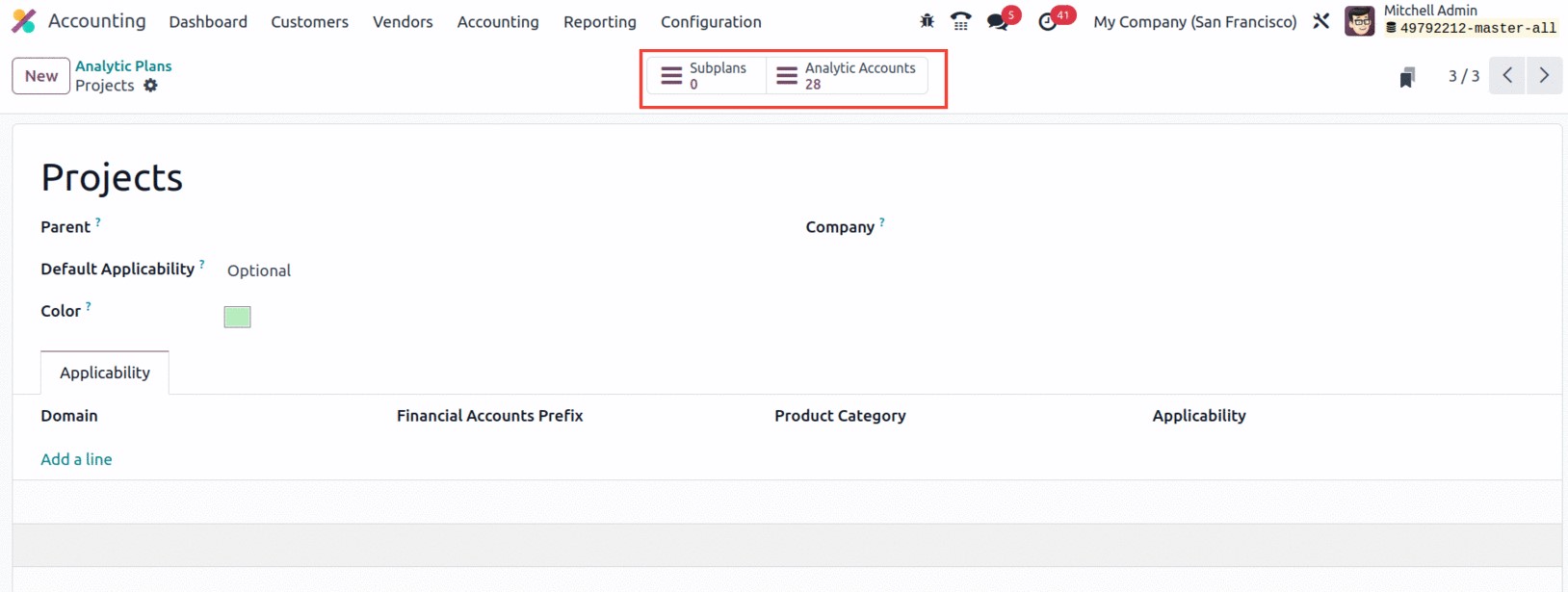
Analytical sub plans will immediately update where you view the parent once they are opened. There are
two sub plans for the analytic plan "Project" in the aforementioned example: "Project Planning" and
"Project R&D." If an item states that any expense from the project is generated, it will be recorded in
the analytic account under the planned project later on when analytic accounts are assigned with these
plans.
Let's go on to understand the following management choice, the Analytics Tags, in the following chapter
of the book now that we are clear on the Analytic Plan tool in the Odoo 17 Accounting module.
Analytic Accounts
The main purpose of the Analytic Accounts function is to keep and monitor your company's financial data.
It can also be used to analyze your financial data and gives you the option to examine your financial
data graphically. The denotation of the analytical accounts will be the first step in the management of
analytical accounting in Odoo17. You have the option to create, amend, and delete your own analytic
accounts using this tool. Additionally, you may view your analytic accounts in graphical, tabular, and
pivot representations with this function.
Under the Configuration tab in the Analytic Accounting section, you may quickly access the Analytic
Accounts menu.
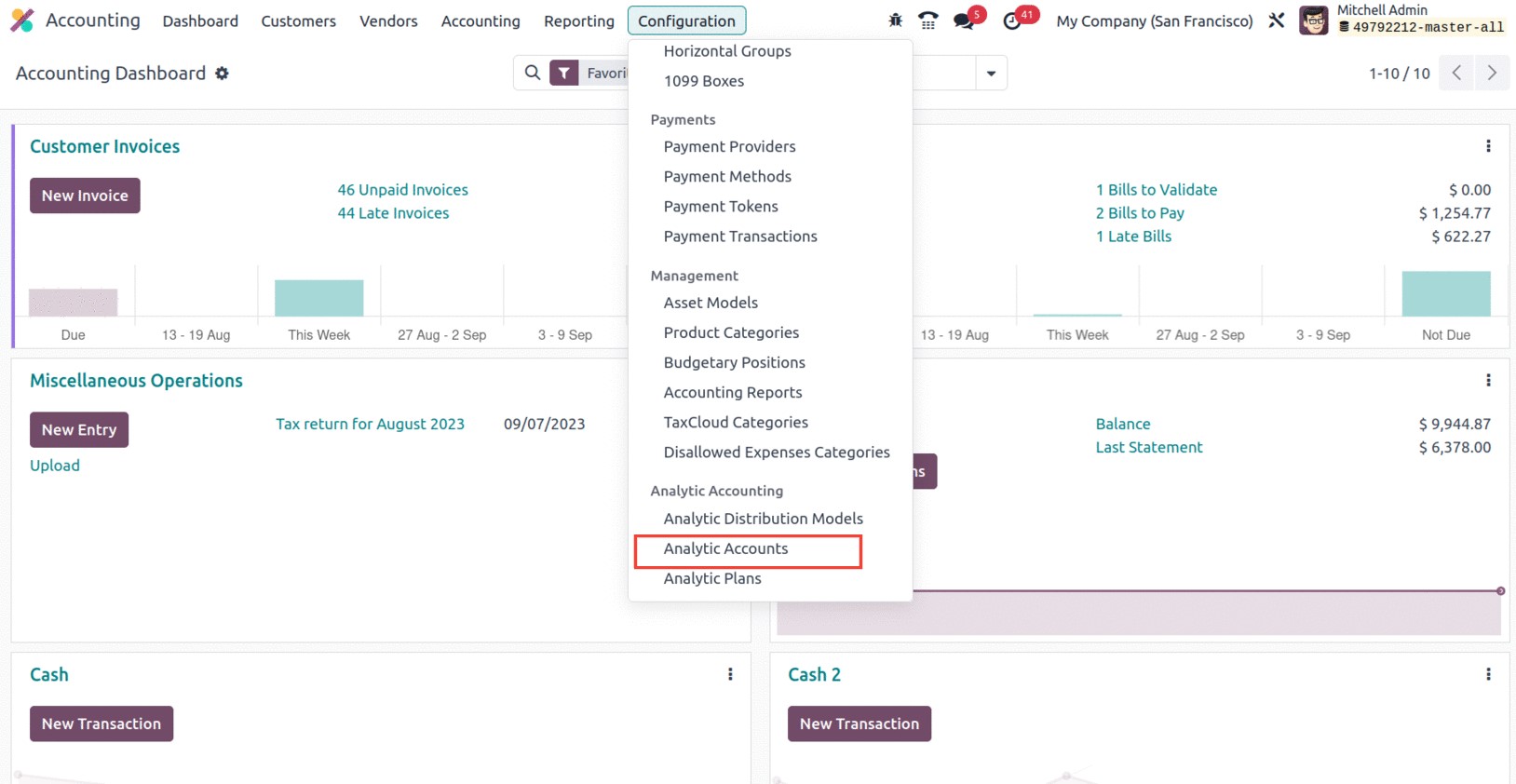
All of the accounts that are configured for the organization's Analytic Accounting processes will be
managed through this Analytic Accounts pane. Additionally, this box has choices for Filters, Group By,
Favourites, and Search.
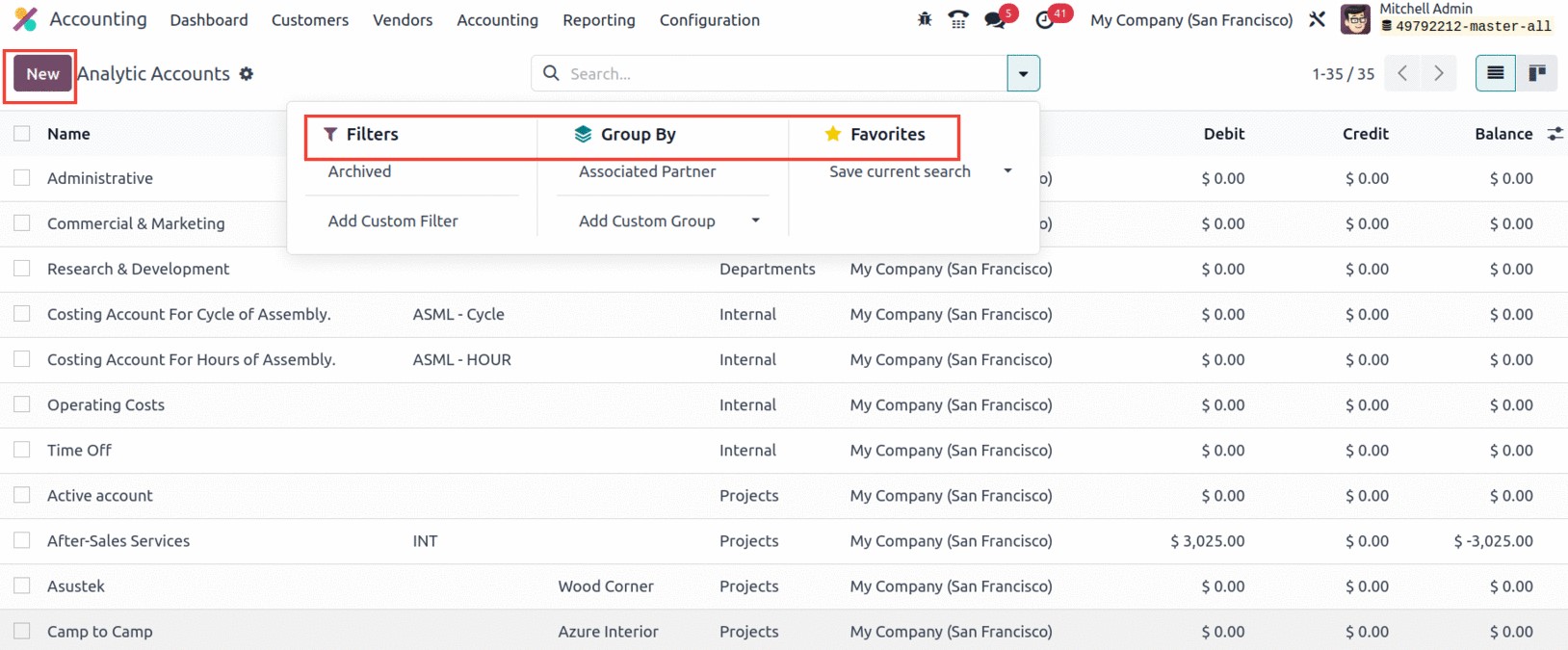
You can also view the window in Kanban format by selecting the Kanban view menu item. The names,
references, customers, plans, companies, debits, credits, and balance amounts for each analytic account
are recorded here. Clicking on any of these account details will give you the chance to update them.
Selecting the NEW button will bring you to the creation form shown in the image below, where you can
mention a new one.
You must enter a name for the analytic account in the Analytic Account field of the form view of the
Analytic Accounts creation window. The Customer, Reference code, and Plan can then be mentioned in the
designated fields. According to their operational bases, the Company and Currency fields will be
automatically assigned.
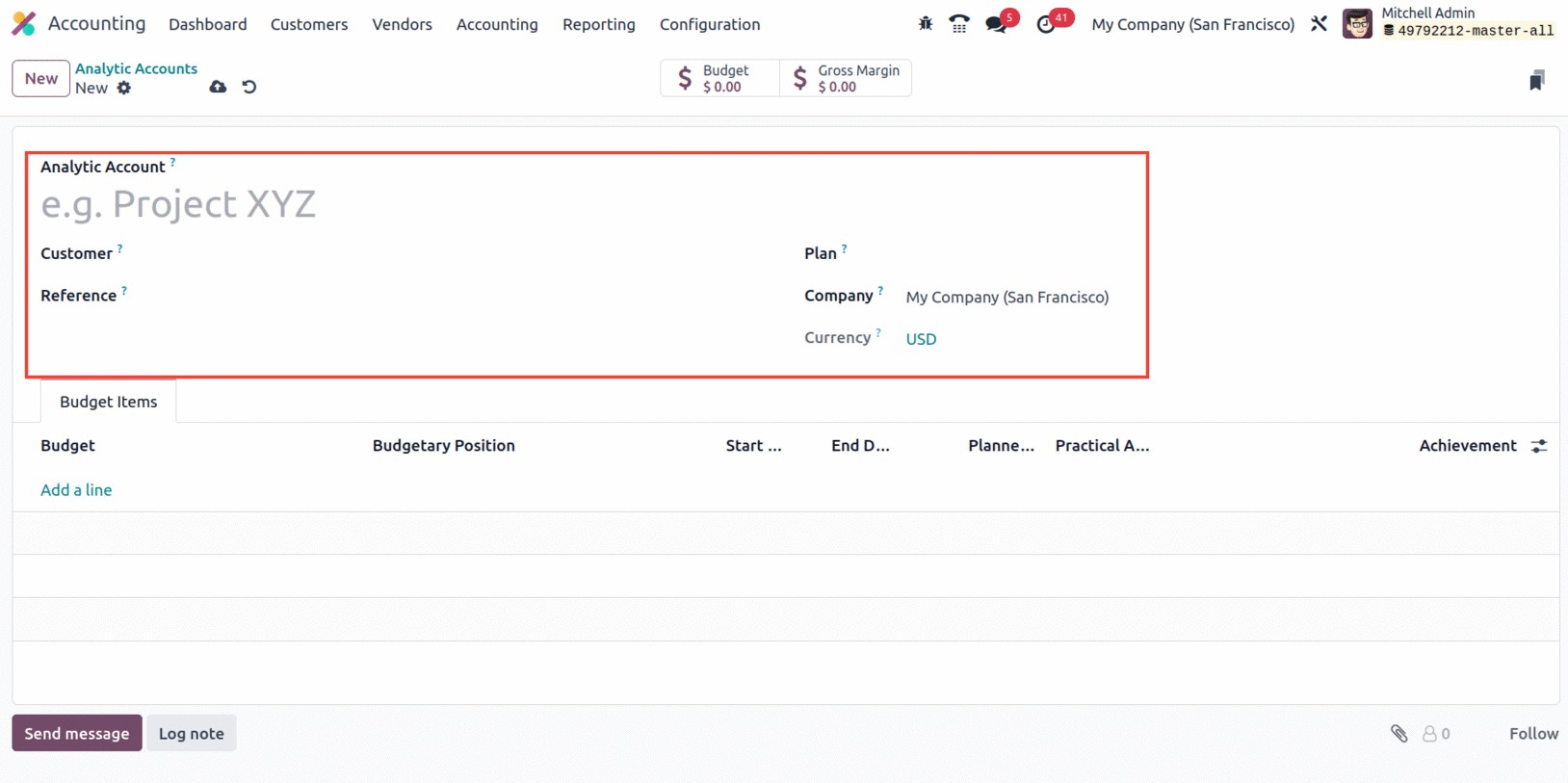
You can add the necessary budget items using the Add a Line option found under the Budget Items tab.
The budget, the budgetary position, the start date, the end date, the planned amount, the practical
amount, and the achievement can all be added here. You can add numerous budget elements to the
analytical account using this option.
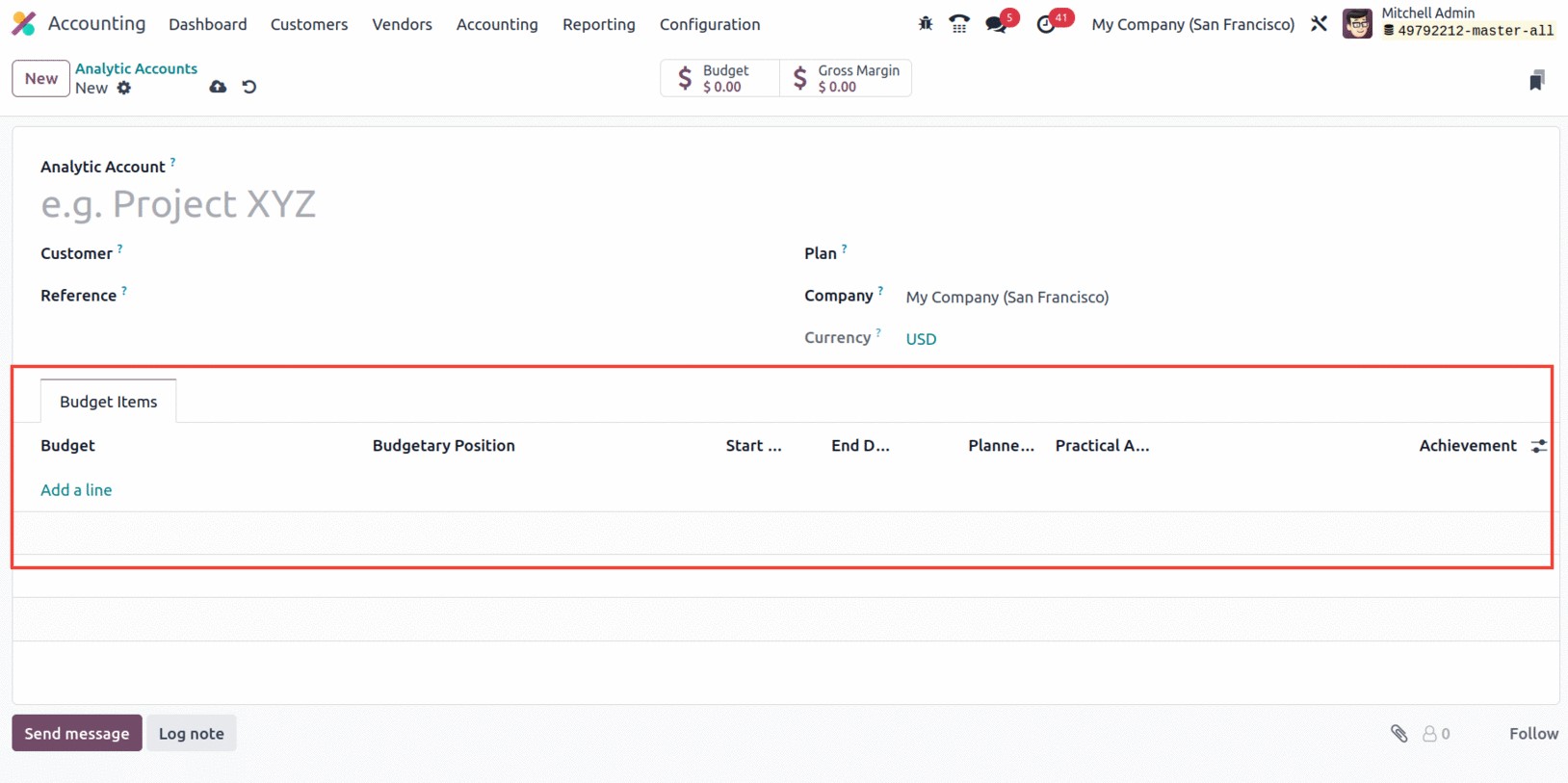
Additionally, the Action button at the top of the window will show the Duplicate, Archive, and
Dashboard options for carrying out the appropriate activities.
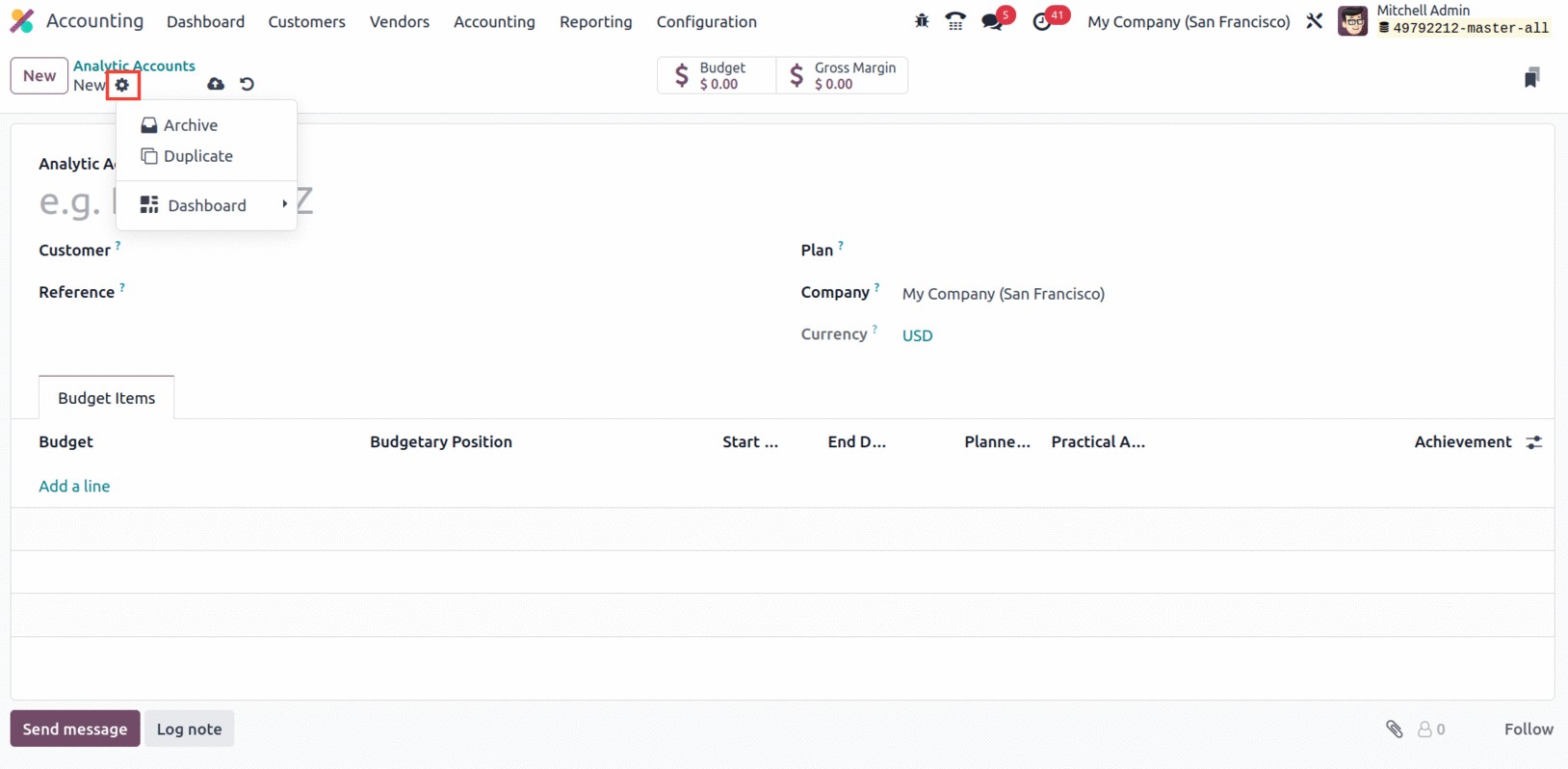
Additionally, the available smart buttons at the top of the form, which are noted in the screenshot
below, will allow users to check the Gross Margin and the overall Budget of the various Analytic
Accounts.
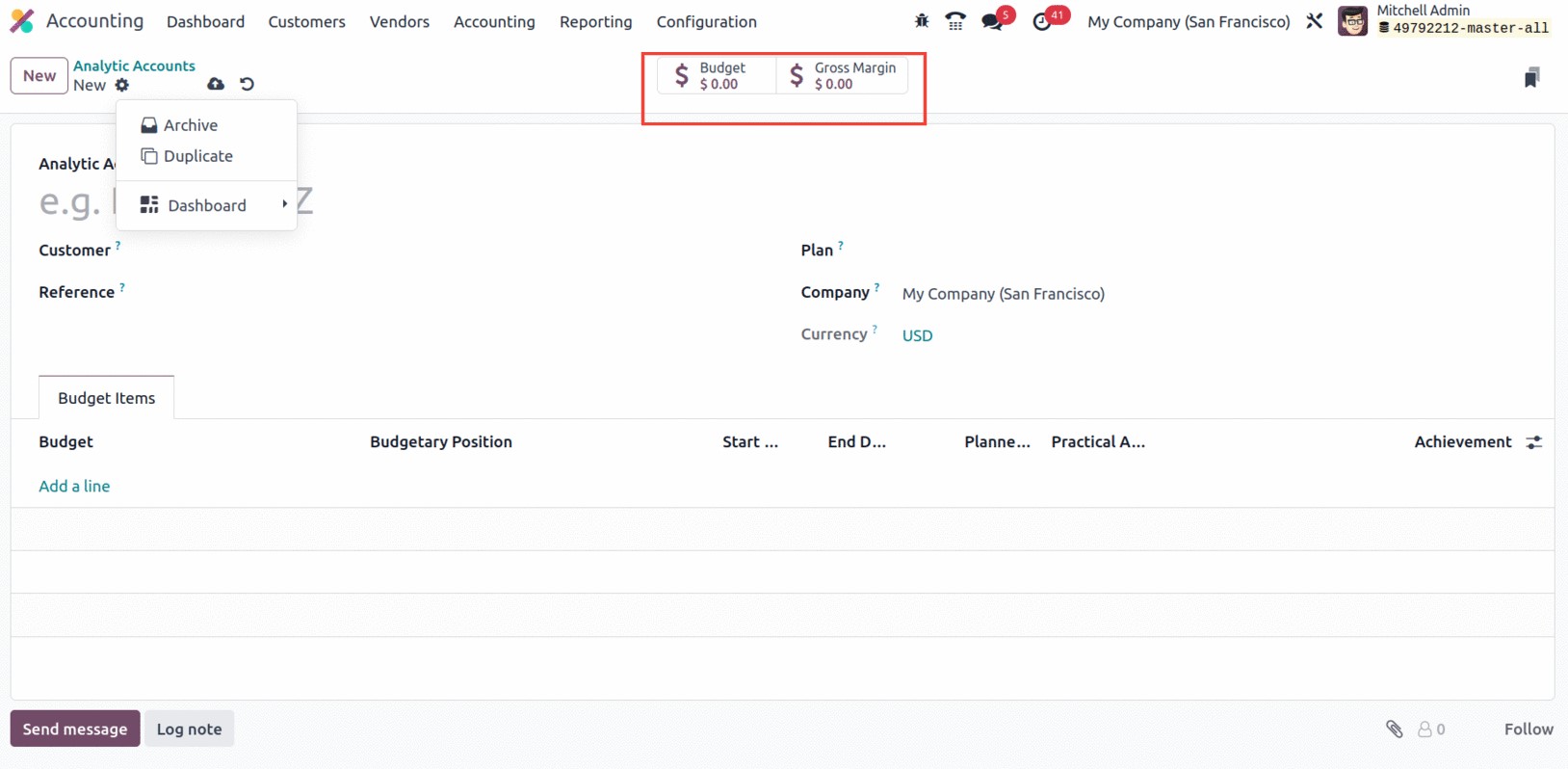
Analytic Distribution Models
We can use rules to automate the accounting entries using Odoo17's Analytics Distribution Models. A
sales invoice, for instance, has several line items. We can design a rule that divides the invoice's
total into fixed or percentage-based payments for each line item. We can avoid having to manually make
journal entries for each line item in this fashion.
The flexibility of the Analytic Distribution feature allows for a wide range of application
possibilities. It can be used, for instance, to allocate the cost of products sold to various expense
accounts or the proceeds from a sales invoice to various income accounts.
We must first develop a model before we can create an analytical distribution model. By heading to
Accounting -> Configuration -> Analytic Distribution Models, we can accomplish this.
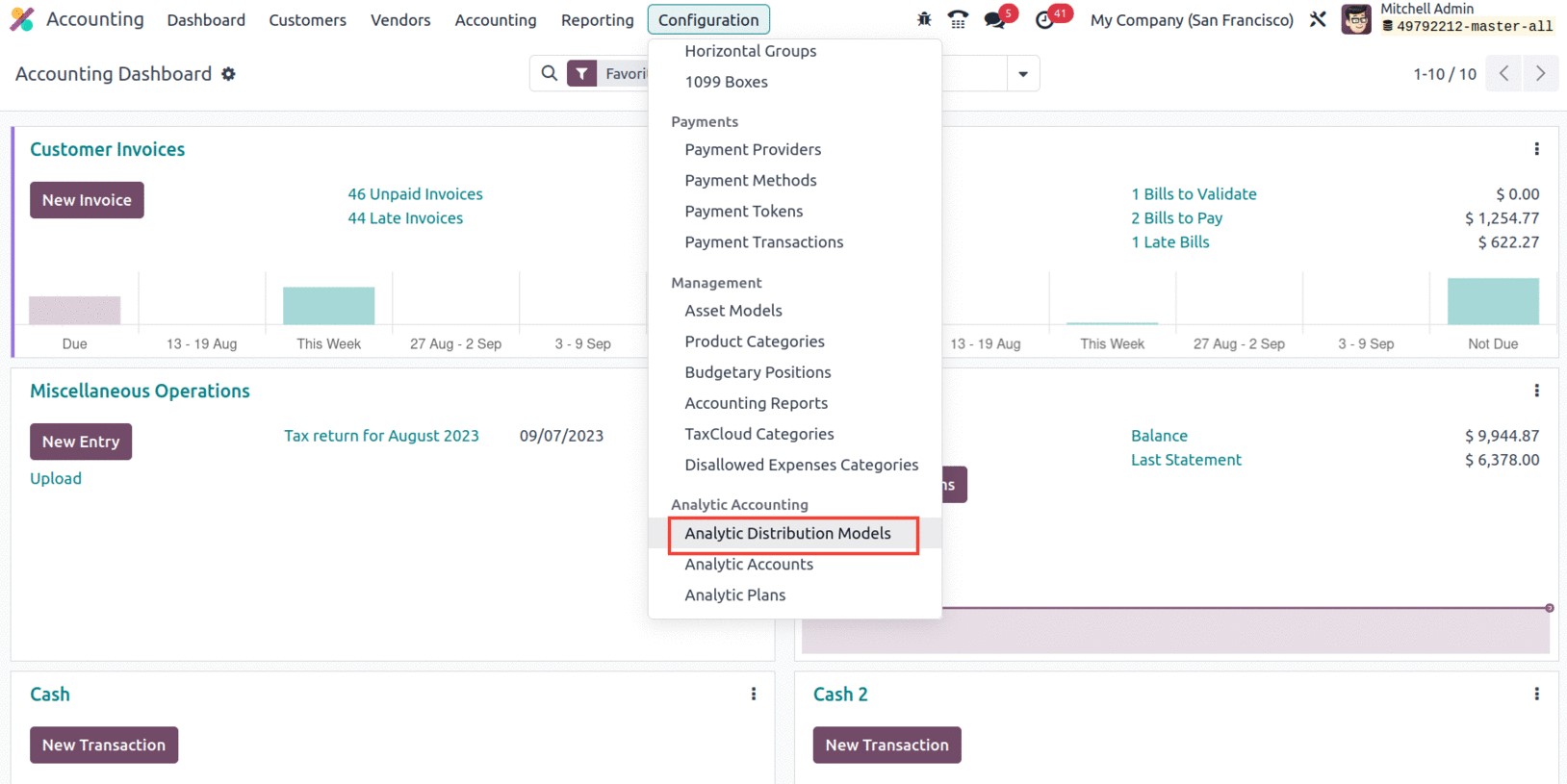
Using the creation form shown below, we must enter some conditions as well as the analytic distribution
for the model.

Any transactions that fulfill the criteria outlined in the analytic distribution models will
automatically be subject to the analytic distribution established there. The partner,
partner category, product, product category, and accounts prefix can all be used to establish
conditions.

The analytic distribution will automatically apply when an invoice is issued for the product category
as seen in the model's snapshot above.
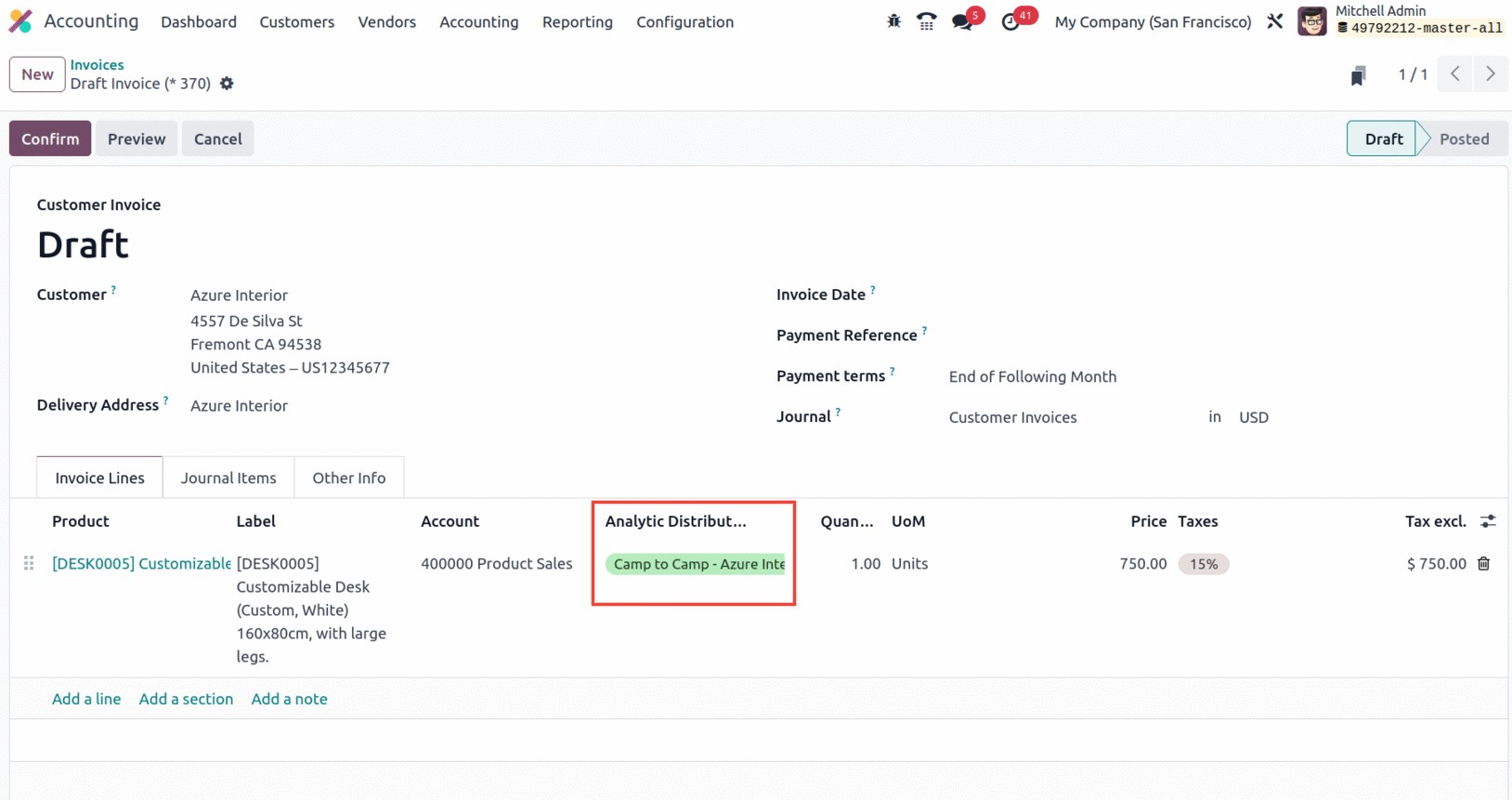
The distribution will be noted in the relevant analytic accounts as a result.

We have been talking about the management tools linked to the analytical accounting features of the
Odoo17 Accounting module that are available under the Configuration tab. Now that we are clear on it,
let's move on to the next chapter of the book where we will discuss how to configure the invoicing
features for the accounting operations of the firm management.